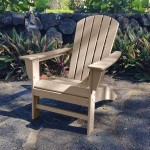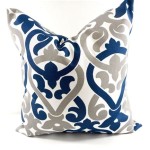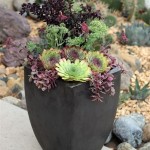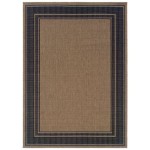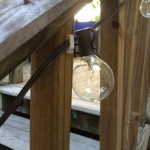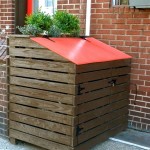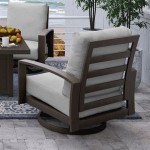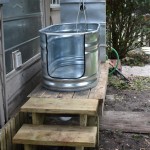Selecting the Right Outdoor Door Knob with Lock: A Comprehensive Guide
Securing the perimeter of a property is paramount for both residential and commercial spaces. An integral component of this security is the outdoor door knob with lock. While seemingly simple, the choice of an exterior door knob with a built-in locking mechanism requires careful consideration of various factors, including security level, durability, style, and ease of use. This article will delve into the key aspects of selecting the appropriate outdoor door knob with lock, providing a comprehensive understanding of the options available and the considerations necessary for making an informed decision.
Understanding the Different Types of Outdoor Door Knobs with Locks
Outdoor door knobs with locks are not universally created; they come in a variety of types, each with its own strengths and weaknesses. Understanding the different types is the first step in selecting the right one for a specific application.
Cylindrical Knob Locks: Cylindrical knob locks are the most common type of exterior door knob lock, and they are frequently found in residential settings. These locks typically feature a keyed cylinder on the exterior side and a thumb turn on the interior side. They are relatively easy to install and provide a moderate level of security. Cylindrical locks consist of two main parts: the outer knob, which contains the key cylinder, and the inner knob, which controls the locking mechanism. When the key is turned or the thumb turn is engaged, a bolt extends from the door edge into the door frame, securing the door.
Tubular Knob Locks: Tubular knob locks are similar to cylindrical locks in their basic functionality, but they often feature a more simplified design. They are typically used for interior doors or less critical exterior doors where security is not the primary concern. The construction is generally less robust than cylindrical locks, and they may be more susceptible to forced entry.
Lever Handle Locks: Lever handle locks are an alternative to knob locks, offering a more ergonomic design that is easier to operate, particularly for individuals with limited dexterity. They function similarly to cylindrical locks, with a keyed cylinder on the exterior and a thumb turn on the interior. Lever handles are often preferred in commercial settings or for accessibility purposes.
Deadbolt Combinations: While not strictly a knob lock, it is crucial to mention the combination of a door knob with a separate deadbolt. This is frequently the most secure option for exterior doors. The deadbolt is a separate locking mechanism that extends a solid bolt deeper into the door frame, making it significantly harder to force open. The door knob serves primarily as a handle and latch, while the deadbolt provides the primary security.
Key Considerations for Selecting an Outdoor Door Knob with Lock
Choosing the right outdoor door knob with lock requires a careful evaluation of several factors. These considerations directly impact the security, durability, and overall suitability of the lock for its intended purpose.
Security Level: The level of security required is paramount. This depends on the value of the property being protected and the perceived risk of intrusion. For high-security applications, a deadbolt combination is highly recommended. For residential properties in relatively safe neighborhoods, a high-quality cylindrical lock may suffice. It is crucial to consider the lock's resistance to picking, bumping, and forced entry.
ANSI Grade: The American National Standards Institute (ANSI) establishes grading standards for door hardware, including locks. These grades range from Grade 1 (highest security and durability) to Grade 3 (lowest security and durability). For exterior doors, it is generally advisable to select a Grade 2 or Grade 1 lock. Grade 1 locks are typically used in commercial settings where high security and heavy usage are anticipated.
Material and Finish: The material and finish of the outdoor door knob with lock directly impact its durability and resistance to weathering. Common materials include brass, bronze, stainless steel, and zinc. Brass and bronze offer good corrosion resistance, while stainless steel is known for its strength and durability. The finish should be chosen to complement the aesthetic of the door and the surrounding hardware while also providing protection against rust and corrosion. Common finishes include polished brass, antique bronze, satin nickel, and oil-rubbed bronze.
Keying Options: The keying options for the lock are another important consideration. Options include keyed entry, passage (no locking function), privacy (thumb turn on the interior), and dummy (purely decorative). For exterior doors, a keyed entry function is essential. Furthermore, consider the possibility of re-keying the lock. Some locks feature removable cylinders that can be easily re-keyed by a locksmith, while others may require more complex procedures. For rental properties or situations where key security is a concern, re-keyable locks offer added peace of mind.
Installation Requirements: The ease of installation is a practical consideration. Some door knobs are designed for easy DIY installation, while others may require professional assistance. Consider the tools required for installation and the level of skill necessary to complete the job properly. Ensure that the lock is compatible with the door's thickness and the existing bore hole. Incorrect installation can compromise the lock's security and functionality.
Aesthetic Style: While security is the primary concern, the aesthetic style of the door knob should also be taken into account. The door knob should complement the overall design of the door and the surrounding architecture. Door knobs are available in a wide range of styles, from traditional to modern, allowing for a cohesive and visually appealing look.
Deeper Dive into Specific Security Features
Beyond the basic types and considerations, specific security features can further enhance the protection provided by an outdoor door knob with lock.
Anti-Pick Pins: Anti-pick pins are designed to make it more difficult for someone to pick the lock using standard lock-picking tools. These pins have unique shapes or configurations that disrupt the traditional picking process, increasing the time and skill required to open the lock without a key.
Bump Resistance: Bump keys are specially cut keys that can be used to open many standard pin tumbler locks. Bump-resistant locks are designed to counter this technique by using different pin configurations or internal mechanisms that prevent the bump key from working effectively.
Reinforced Strike Plates: The strike plate is the metal plate that is attached to the door frame where the bolt enters. A reinforced strike plate is made of thicker, stronger metal and is often secured with longer screws that penetrate deeper into the door frame. This makes it more difficult to kick in the door, as the strike plate is less likely to break or pull away from the frame.
Longer Screws for Strike Plate Installation: Standard screws that come with strike plates are often too short to provide adequate security. Replacing these screws with longer screws (at least 3 inches) that reach into the structural framing of the wall significantly increases the resistance to forced entry.
Key Control: Restricting unauthorized key duplication is critical for maintaining security. Some manufacturers offer key control systems that limit the availability of blank keys and require authorization for key duplication. This prevents unauthorized individuals from obtaining copies of the key without permission.
Smart Locks: Smart locks offer advanced security features such as keyless entry, remote locking and unlocking, and activity monitoring. These locks often use Bluetooth or Wi-Fi connectivity to communicate with a smartphone or other devices. Smart locks can be particularly useful for managing access to a property and tracking who enters and exits.
By carefully considering these factors and security features, individuals can make an informed decision when selecting an outdoor door knob with lock that meets their specific security needs and aesthetic preferences. The investment in a high-quality and properly installed lock is a crucial step in protecting a property and ensuring the safety of its occupants.

Premier Lock Stainless Steel Grade 2 Entry Door Knob With Sc1 Keys Gr2s The Home

Premier Lock Stainless Steel Entry Door Knob Combo Set With Deadbolt And Total 12 Keys Keyed Alike 2 Pack Ed03 The Home

Stratford Entry Door Knob Deadbolt Broe ǀ Hardware Locks Today S Design House

Premier Lock Matte Black Exterior Single Cylinder Deadbolt Keyed Entry Door Knob Multi Pack 2 Ed07 At Lowes Com

Entry Door Lock Set With Deadbolt And 12 Sc1 Keys Buy In Bulk

Apodess Keyed Entry Door Knob With Lock Interior And Exterior Standard Ball Satin Nickel

Premier Lock Entry Door Knob Combo Set With Deadbolt Of 3 Keyed Alike Stainless Steel 3pk Ed03c Zoro

Ball Satin Nickel Keyed Entry Door Knob ǀ Hardware Locks Today S Design House

Keyed Alike Entry Door Lock Knob With Double Cylinder Deadbolt Satin Nickel Finish Combo Pack Dl609et 102sn 6pack

Premier Lock Matte Black Exterior Single Cylinder Keyed Entry Door Knob Multi Pack 2 Ed07

